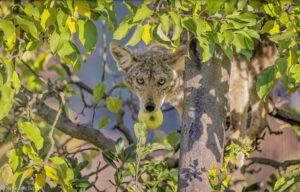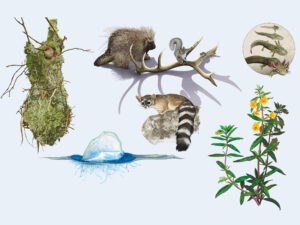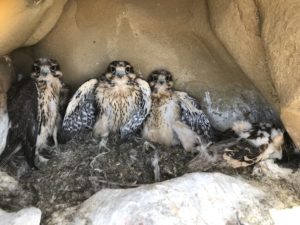As the sun sets in Sunol Regional Wilderness Preserve, winged mammals emerge. Some burst from oak woodlands and flutter above the canopy. Others swoop low, sending out sound waves to echolocate their prey. They feast on bugs—mosquitoes, moths, beetles, arachnids—before disappearing back into their secret roosts in caves and trees.
These insectivorous nighttime flyers belong to the order Chiroptera, which, taken from ancient Greek, translates to “hand wing.” We call them bats. To wildlife biologist Dave Riensche, they are vital to habitat conservation in the East Bay.
“Bats are our friends,” Riensche says. “They are so important worldwide for a whole number of things.”
A biologist for the East Bay Regional Park District for more than three decades, Riensche conducts wildlife surveys and volunteer programs covering the array of the park district’s wild inhabitants. “I consider myself a bird nerd, a frog friend, an amphibian ambassador,” Riensche says. But bats, he explains, hold a special place in the landscape—and because bats are nocturnal, specifically the often-ignored nighttime landscape.
Yet bats often get a bad rap. “Bats are poorly understood by the general public,” says Scott Osborn, a wildlife biologist for the California Department of Fish and Wildlife. “The more we can do to educate, the better.”
Especially now, as the COVID-19 pandemic shines a harsh spotlight on bats. SARS-CoV-2, the coronavirus causing the disease, was first identified in China earlier this year. It is a zoonotic virus, meaning its origin can be traced back to wildlife. Though this coronavirus’s origins are still under investigation, scientists in China found a similar strain in horseshoe bats, making them likely suspects. But the bats did not pass the virus to humans. There was an intermediate animal host that did, although its identity remains unclear.
The pandemic has added tension to bat conservation. Given a potential link between bats and disease, how can we safely exist alongside them?
For Riensche, answers to this question will be found in studying how bats live in the East Bay’s natural environment. That knowledge can increase our fears—or allay them.
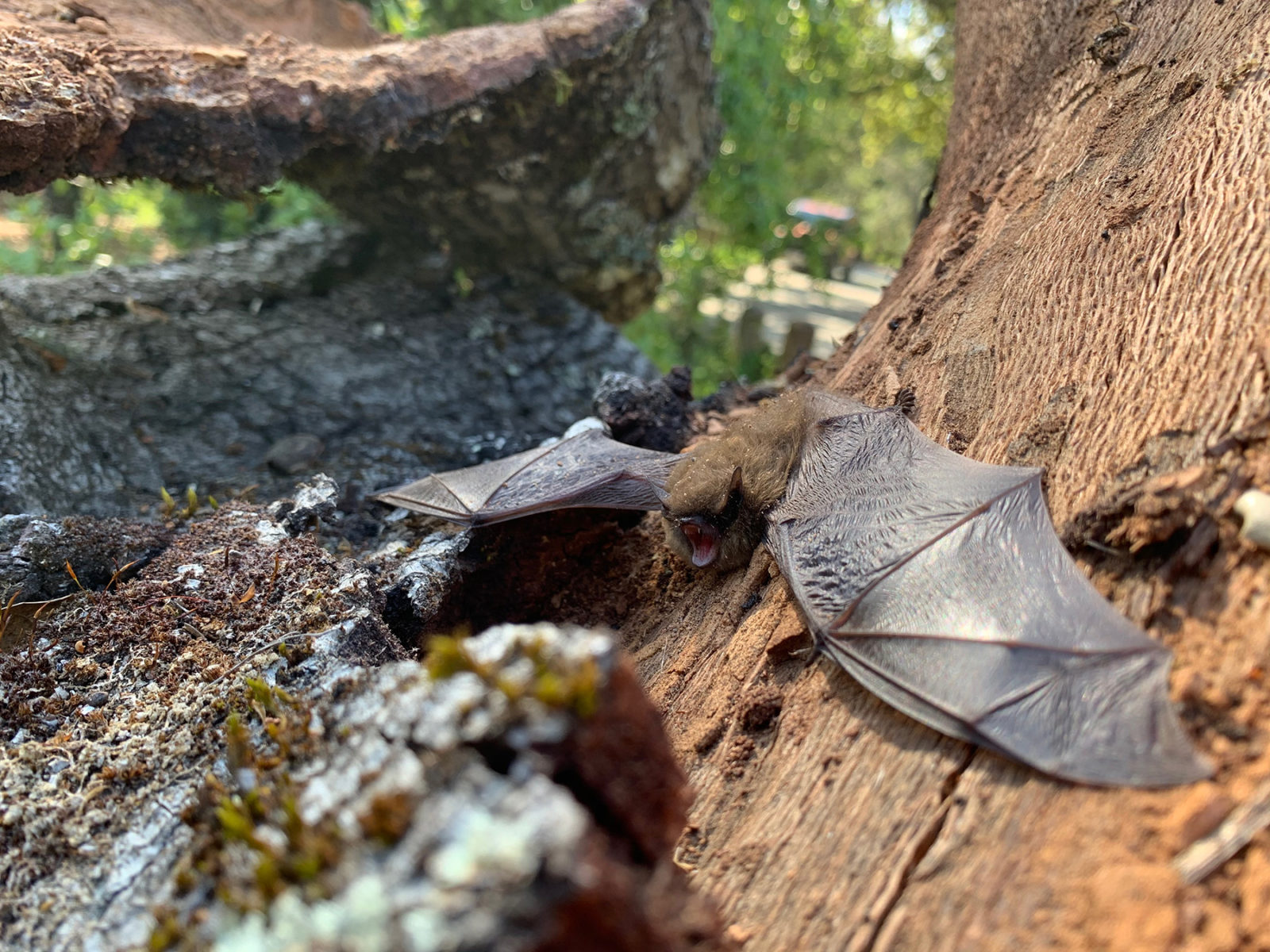
“Bats diverse as the landscape”
Surprisingly—given that they’re a common species in a major metropolitan area—little was known about the East Bay’s bats until fairly recently. In 2004, Riensche began a survey to better understand which bat species might occupy the East Bay Regional Park District’s 73 parks covering 125,000 acres. He picked ten locations and recruited volunteers—citizen scientists he calls the Bat Brigade—to catalog species and behaviors.
After more than 16,000 volunteers and 100,000 service hours, the Bat Brigade has found eight bat species out of the Bay Area’s 15 known species. Two of those eight, the pallid bat and Townsend’s big-eared bat, have been designated by the state of California as species of special concern, meaning they are vulnerable to extinction.
Each species fills a particular niche in East Bay ecology. “Bats can be as diverse as the landscape,” Riensche says. For instance, pallid bats roost in rocky outcrops near grasslands, where they search the ground for large insects like Jerusalem crickets, while big brown bats live in human-made structures, like the Piedmont Stables at Reinhardt Redwood Regional Park, and forage in the open air.
Still, having spent 20 years studying bats, Riensche says these mammals remain mysterious. “There’s a lot of basic information that isn’t known.”
“We’re at the tip of the iceberg,” says Doug Bell, wildlife program manager for the East Bay Regional Park District. “We’re just beginning to understand bats in our area.”
The opportunities for discovery extend across the planet. The American Museum of Natural History describes 1,421 species of bat worldwide—one-fifth of all known mammal species. “The tendency is to lump bats into one category,” says David Johnston, a bat biologist based in Los Gatos, “but they have very different biologies.” Johnston says that comparing some species of bats with others can be like comparing California condors to red-tailed hawks or humans to tamarin monkeys.
“We’re forcing wildlife and humans to come into closer contact with one another”
Grappling with bats’ diversity is crucial in the era of COVID-19. Hannah Frank, a Stanford evolutionary ecologist studying the relationship between bats and disease, says that the high number of bat species is one reason they’re often important disease reservoirs. “The sheer diversity leads to a diversity of things they get infected with.” In fact, a recent study suggests that when we factor in bats’ species richness, the number of species in an evolutionary group, bats aren’t more likely to host viruses than other groups of mammals.
But bats fly, which means they spread over large areas. They also live longer than other similar-sized mammals. These factors, Frank explains, increase the risk of zoonotic spillover. Bats also regulate their temperatures in a way that encourages the evolution of fever-resistant viruses, which may play a role in the severity of infections that spillover. That risk is amplified when bats come into unnecessary contact with humans.
While scientists in China have found a likely ancestor to SARS-CoV-2 in horseshoe bats, it’s difficult to determine when or how the spillover of such viruses occur. Some researchers point to the capture and trade of live wildlife. Others blame deforestation and other environmental changes. Either scenario stresses bats out, says Frank. And studies indicate that stress can impact some bats’ immune systems, causing them to release viruses more readily. As development—often farming—pushes into previously undisturbed habitat, stressed bats may come into closer contact with humans.
“The increase in frequency of disease spillover events is directly caused by anthropogenic pressures on the environment,” says Jon Flanders, director of the endangered species intervention program at Austin, Texas–based Bat Conservation International. “We’re forcing wildlife and humans to come into closer contact with one another.”
What does that mean for the Bay Area? North American bats do potentially harbor coronaviruses, Frank says, but so far they’ve had no impact on humans. Compared to China, Frank explains, SARS-related coronaviruses spillover “would be very unlikely” here because we have different bat species. Also, learning to coexist with bats “is very important for avoiding spillover.” That means leaving their habitats intact and keeping our distance from them, as with any other wildlife.
As far as COVID-19 is concerned, Frank says North American bats don’t pose any threat in spreading the virus. In fact, some biologists worry about the opposite: infected humans spreading the virus to the bat communities they study, through “reverse zoonosis.” In response, the federal government has recommended that bat researchers refrain from handling bats until more is known about the relationship between SARS-CoV-2 and North American bats.
For many bat biologists, that means field research has been replaced by analyzing data and by advocacy in the face of a scary new illness. “In some ways,” says Frank, “we’ve been busier than ever trying to understand the role of bats in this current pandemic and trying to clarify the importance of bats.”
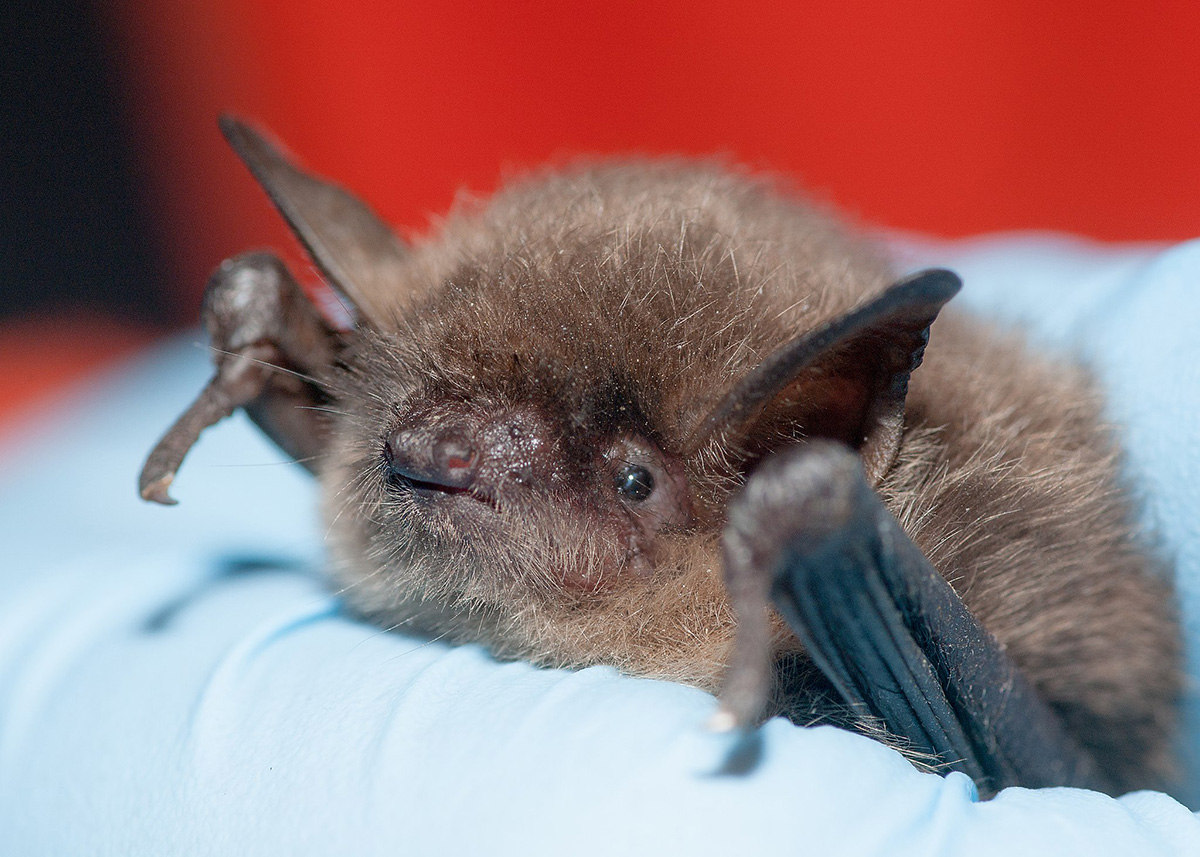
Raising a glass to the bats
And from an ecological standpoint, bats are important—in fact, essential.
In the American Southwest and northern Mexico, nectar-feeding bats like the lesser long-nosed bat pollinate saguaro and organ pipe cacti. Bats also pollinate bananas and agave—the main ingredient in tequila. In other words, next time you shake up a margarita, raise a glass to the bats.
In the East Bay, the bats in Riensche’s surveys are all insectivorous—as opposed to nectar-feeding and fruit bats. The insects they eat include mosquitoes, crickets, and moths, including the corn earworm moth, which can be a major agricultural pest. A 2011 Science report estimates that without pest-eating bats, North American agriculture would lose up to four billion dollars each year in crop damages. In other words, bats are nature’s integrated pest manager. “For a farmer, a bat’s a friend,” Riensche says. “We don’t have to use pesticides to do what bats are willing to for free.”
As we calculate the risks and benefits bats bring to us, bats face their own set of risks, mostly human-caused. According to the Western Bat Working Group, 40 percent of bat species in North America can be found on federal or state endangered, threatened, or sensitive species lists.In the Bay Area, four of our 15 identified bat species are listed by the state as species of special concern.
“Urbanization is the single greatest threat to bats in the Bay Area,” Johnston says. Depending on the species, urbanization impact comes in various forms. Habitat loss—degredation of foraging and roosting habitat—is the biggest concern. For example, Townsend’s big-eared bats abandon roosts if even slightly disturbed by humans. While definitive data is scarce, some biologists believe that urban light pollution may render pallid bats more susceptible to predation: Since they forage on the ground, they require darkness to protect them from coyotes, cats, and foxes.
White-nose syndrome, named after the fuzzy white fungus that covers bats’ faces and wings, has become a lethal menace since it emerged in New York state in 2006. In 2016, the fungus that causes the disease appeared on the West Coast for the first time east of Seattle. In 2018, biologists detected the fungus on a bat near Lassen Volcanic National Park, marking the first detection in California. A year later, the fungus popped up on three more bats in the same area.
The disease is not the only recently arrived threat. With the growth of wind energy development, biologists have begun noticing the toll it takes on birds and bats species, particularly the migratory hoary bat. As wind farms increase across the country, some experts have warned that the hoary bat population could decline by as much as 90 percent in the next 50 years.
In the East Bay, EBRPD’s Bell, who researches the impacts of wind farms on volant wildlife, calls the wind projects at Altamont Pass “ground zero” for birds and bats killed by turbines. “We’re trying to figure out the balance between renewable energy, which we all need, with its costs,” he says. As wind projects expand, he explains, turbine-free open spaces like those of EBRPD become more necessary.
Riensche agrees. “The parks are a haven. For many bats, this is the only spot for them to be.”
“Embrace bats for all the great things they do for us”
Riensche calls himself a classic naturalist. He learned how to identify birds by their songs. He started out his bat surveys by finding bats’ roosts and counting them as they emerged. He used mist nets to catch and analyze them. But these days, he heads into Sunol Regional Wilderness Preserve or Del Valle Regional Park outfitted with bat detectors and ultrasonic microphones.
Attached to a long pole, the mics pick up frequencies from bats’ echolocations and feed them to software called SonoBat, which visualizes the echolocations and identifies the bat species. With such new tools, Riensche hopes to learn more about the way bats live in the East Bay and how we can best coexist with them—and, he hopes, come to see them as neighbors.
“Bats are a barometer for the quality of health of our environment,” he says, explaining that as bats represent the nocturnal habitat, conservationists “have to speak for the habitat. We have to be that voice.”
Meanwhile, as bats generate alarming headlines around the world, Riensche checks the skies. “I’m not afraid of them,” he says, “and I would encourage the public to embrace bats for all the great things they do for us.”
LIVING WITH BATS….ON THE TRAIL
You might see bats throughout the East Bay Regional Park District, but experts advise you enjoy them from afar to minimize disturbance. Near dusk, as bats emerge from their roosts to forage for insects, they’ll mostly stay clear of us as they focus on chasing insects.
If you locate a roost in a cave or barn, watch from a distance or leave the bats alone altogether. “Just as you wouldn’t disturb a bird’s nest,” says Jon Flanders of Bat Conservation International, “you don’t want to shine a light up into where bats roost. It will stress them out.”
If you come across a bat that looks sick or injured, never touch it with your bare hands. If there are signs of white-nose syndrome (white fuzz on the snout or wings and emaciated appearance), report the bat to the California Department of Fish and Wildlife, which is actively monitoring for the disease across the state.
One common bat-related fear is rabies, usually transmitted via saliva through a bite. That fear is overblown, say bat experts. “The chances of catching rabies from a bat are really quite low,” says Scott Osborn of California Fish and Wildlife.
Bat guano can contain a fungus that causes the respiratory disease histoplasmosis. Though this disease is rare in California, experts say that caution should be taken around large accumulations of guano.
….AND AT HOME
Bats often roost in barns, stables, or small spaces in attics or roof shingles. So what do you do if you have bats on your property? In general, Bat Conservation International’s Flanders suggests we welcome them as neighbors. “Be respectful to nature,” he says. “They were here first.” This can mean using fewer or no pesticides in your yard or even putting up bat houses to provide habitat. For the most part, he explains, bats will stick to foraging by night and roosting by day, and all homeowners have to do is sweep away guano once in a while.
“They’re insect-munching machines,” EBRPD’s Dave Riensche adds. “If you’ve got bats around, you don’t really have to worry much about mosquitoes.”
On occasion, colonies can get too big or start to cause noise and smell concerns. On its website, Bat Conservation International provides a guide for humanely excluding bats from attics or roofs. This generally requires installing special one-way screens or tubes that allow bats to leave their roosts but blocks them from returning. “This should be done by a trained professional and at only certain times of the year, as you don’t want to trap baby bats who are unable to fly out,” says Flanders.
If an individual bat flies into your house, open all your doors and windows, turn off the lights inside and turn on the lights outside. Bats will follow the insects attracted to the outdoor lights. “Don’t try to chase it out. Let it find its own way out,” says Osborn of California Fish and Wildlife. “Stay out of the way, and if it decides to roost behind a curtain, gently coax that bat with a broom to get it to fly again. They are good at navigating themselves out.”

